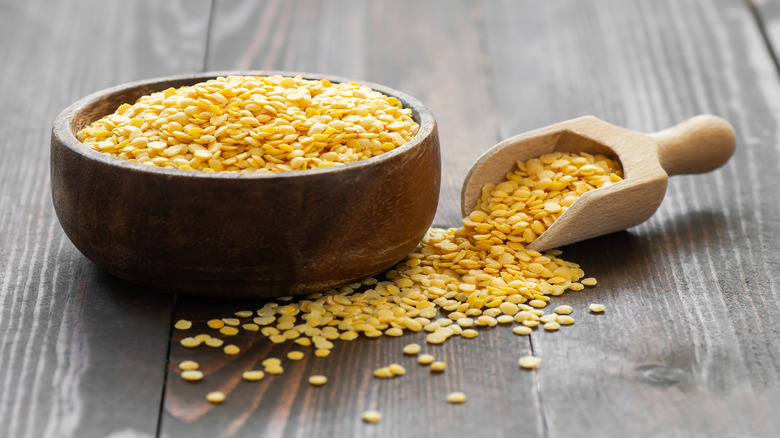Think Twice Before Cooking Yellow And Red Lentils In Your Instant Pot
An Instant Pot is more than just a fancy, branded pressure cooker. Even the more affordable models usually come with six or seven cooking functions, such as sautéing and steaming, that'll help you prepare a surprising number of recipes, many of which will have lentils as the star of the show. However, if you're planning a meal of pressure-cooked lentils, be cautious: certain types of lentils, particularly red and yellow ones, may not perform well in an Instant Pot!
Red and yellow lentils are different from the usual brown or green ones you'll find on the grocery store shelves, not just in color but also in how they cook. These lentils are super popular in India and the Middle East because they're delicate and cook faster than their brown and green counterparts. The secret? They're "split" before they're sold, which means the outer skin or husk is removed.
Their speedy cooking time gives them a smooth, almost creamy texture, perfect for dishes like lentil soup, but that's also why using an Instant Pot to cook these lentils isn't a great idea. The high-pressure environment of an Instant Pot can reduce them to little more than a puree very fast, which is an obvious problem for dishes where the lentils' texture and appearance matter. On the other hand, brown and green lentils, which aren't split, can handle the pressure and keep their shape better just fine in an Instant Pot.
How do you properly cook yellow and red lentils?
Instead of using an Instant Pot, we recommend cooking yellow and red lentils the old-fashioned way on a stovetop, which is much gentler. Besides the lentils not being subjected to high pressure, you also have more control over the cooking process. You can adjust the heat as necessary to prevent overcooking, keeping them from turning into mush.
As you cook, keep in mind that, even on the stovetop, yellow and red lentils typically cook faster than their green and brown counterparts. They often become tender in half the time it takes for green and brown lentils, usually around 15-30 minutes versus the 35-45 minutes required by their unsplit counterparts. It's important to be gentle with them and avoid stirring too much since these delicate lentils can easily break apart and lose shape. Furthermore, because they're already split and soften so quickly, there's no need to pre-soak your lentils if you're using red and yellow ones, making them even more convenient to cook!

